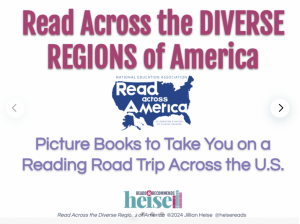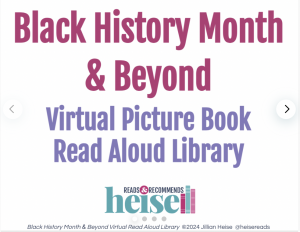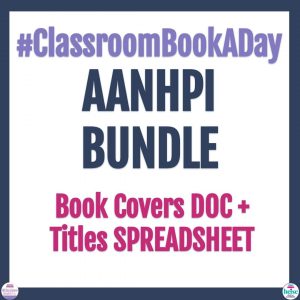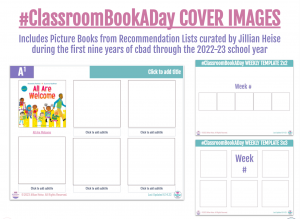Though we are dealing with a new normal at this point with the majority of schools closed across the country for social distancing purposes, I don’t want to lose sight of putting the spotlight on some amazing picture books. *Penguin Random House has given a temporary open license during this time to record a read aloud for your students. Please read, and follow, the specific details found here.
Today I’m shining the spotlight on
Traci Sorell & Weshoyot Alvitre,
author & illustrator of #cbadspotlight pick
AT THE MOUNTAIN’S BASE
AT THE MOUNTAIN’S BASE

A family, separated by duty and distance, waits for a loved one to return home in this lyrical picture book celebrating the bonds of a Cherokee family and the bravery of history-making women pilots.
At the mountain’s base sits a cabin under an old hickory tree. And in that cabin lives a family — loving, weaving, cooking, and singing. The strength in their song sustains them through trials on the ground and in the sky, as they wait for their daughter/sister/granddaughter/niece, a pilot, to return from war.
With an author’s note that pays homage to the true history of Native American U.S. service members like WWII pilot Ola Mildred “Millie” Rexroat, this is a story that reveals the roots that ground us, the dreams that help us soar, and the people and traditions that hold us up.
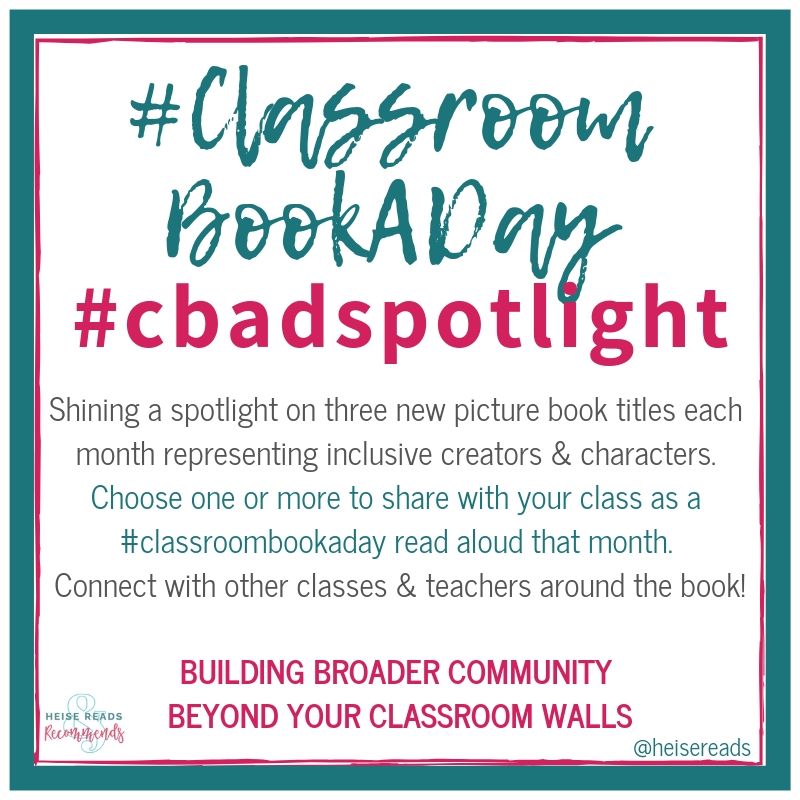
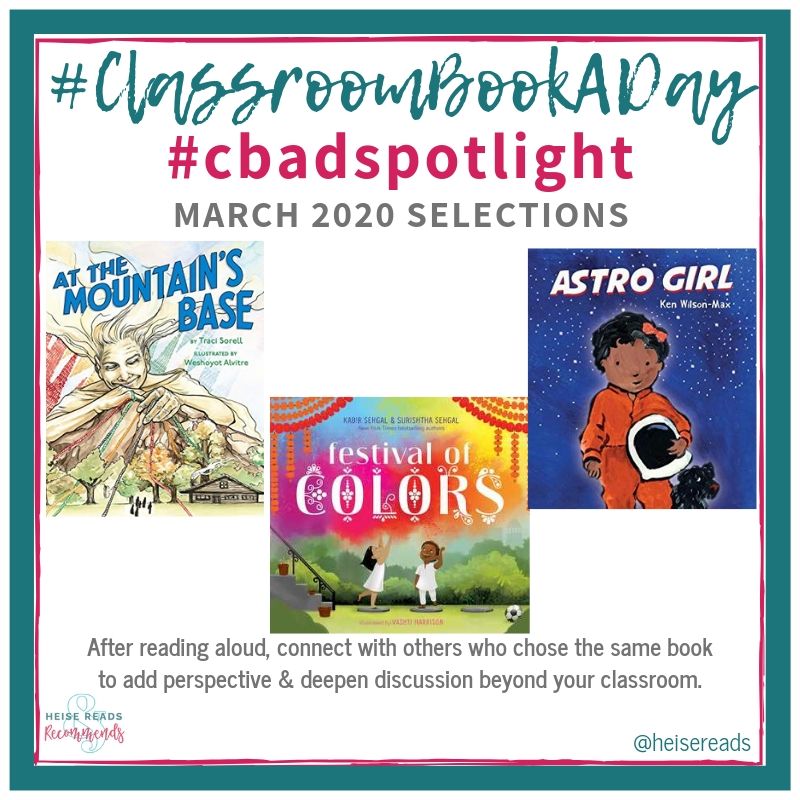
Thank you, Traci & Weshoyot, for joining me for a #cbadspotlight conversation today!
What were your inspirations for writing and illustrating this book?
Traci: I read the picture book, In a Village by the Sea, written by Muon Van and illustrated by April Chu. I fell in love with its circular structure. I wanted to challenge myself to see if I could write a tight, lyrical story in verse. I also wanted to shine a light on Native women’s service in the armed forces which is often overlooked and share that the family is sacrificing just as much as the servicemember in keeping them in their prayers and sending out good thoughts for their safe return.
Weshoyot: My inspiration for illustrating this book was from Traci’s line about weaving. That really inspired me to incorporate a subject I wanted to show with my illustrations, but also learn more about. I spin and knit and engage in a lot of fiber crafts in my spare time, and being able to learn more about Indigenous ways weaving is traditionally used, really inspired me to create these pages.
What messages do you hope kids (of all ages) take away from this book?
Traci: I hope they see the magic that is the written story and the visual story and how they weave together. I want them to see the strength of Native women both as the core of the Cherokee family as well as their contributions outside of it such as when they are serving as warriors in battle.
Weshoyot: I hope kids are able to relate to the family, and realize that Native families feel the same emotions as they do. We are all human.
Did you work together on the vision for this book? What was the process like?
Traci: Thankfully, yes. Our Kokila publishing team was very supportive of this. Weshoyot wanted to feature Cherokee finger weaving in her artwork, so I provided research materials for her to reference. I saw her sketches and color drawings and shared those with Cherokee culture keepers in my community for their feedback. I enjoyed working with her so much. Getting to present the book together at a teachers’ workshop at the National Museum of the American Indian last fall was a wonderful event that I never anticipated happening.
Weshoyot: It was a very easy collaboration, in that I was given a lot of freedom to interpret Traci’s words into the look of the art. While I did receive feedback, I really appreciated Namrata and Jasmin giving me room to play with how I wanted to try to visualize the poem. My process for this was quite similar to my comic book work I have done: starting with thumbnails, moving on to pencils. The way in which it differed was in the hand-painted colors. I usually go to inks first. In this book, I went in with color first and then inks as accent. It allowed me to play a bit more abstractly. We had a revision on one page, which visually felt a bit redundant. I loved the way one of the spread pages opened the story to breathe a bit, and decided to go that route with the problematic image. Instead of two images, it turned into the family spread that shows all the woman working together.
What is your favorite part of making picture books?
Traci: Getting to work with so many people! When I’m writing, my family, my community and my critique partners are all helping shape my drafts. After a publisher buys my words, I continue to work with an editor, an illustrator, an art director and all sales and marketing staff to make the story as strong as it can be. I love the collaborative nature of this work.
Weshoyot: I think I really really enjoy the ability to abstract the storytelling and the potential to break linear visuals. I have been thinking a lot lately on what I learned making this book, and how I would do things on future books, with the knowledge I now have from this book. I am excited to try some new things out in future work.
#cbadspotlight is putting the spotlight on inclusive #ownvoices books. What can you share with students about the connection you have to this book or the choices you made while writing it to add diverse representation?
Traci: I am a Cherokee Nation citizen and usually write about Cherokee and other Native people. So I wrote the poem, envisioning a Cherokee family but I did not state that explicitly as I wanted to let the illustrator decide who the family would be. I was explicit that the pilot is female.
Weshoyot: I feel like I did quite a bit of research into finger-weaving prior to doing the art for this book, so I could not only illustrate it accurately but have a connected thought process I could talk about afterwards. The way I incorporated traditional arts not only allows the reader to see more nuances in this art form, but also to connect it with the family who are Indigenous. I hope this not only adds knowledge for the reader, but perhaps encourages them to learn more, if they’re so inclined. Our stories and traditions and ceremony are so closely tied to our traditional crafts and our day to day. They make up who we are. And they tell our stories long after we are gone.
#classroombookaday is a goal to read aloud a picture book every day of the school year to students at any grade. What would you like to say to the teachers who are taking on this challenge?
Traci: I’m jealous of the students in your classes! They have the opportunity to experience the wonderful marriage of text and art every day of school. It is also a fabulous way to build classroom connectivity among students and bring in so many topics for further inquiry that simply are not present in your curriculum. I applaud your commitment.
Weshoyot: I would like to thank them. There is nothing better than engaging the mind through a daily practice such as reading, which can inspire the mind in so many wonderful ways. Thank you for making sure these students, at any grade level, are being read to daily.

Penguin also has a downloadable poster for At the Mountain’s Base with the text in Cherokee!
Be sure to check out all of the #cbadspotlight choices for this school year!
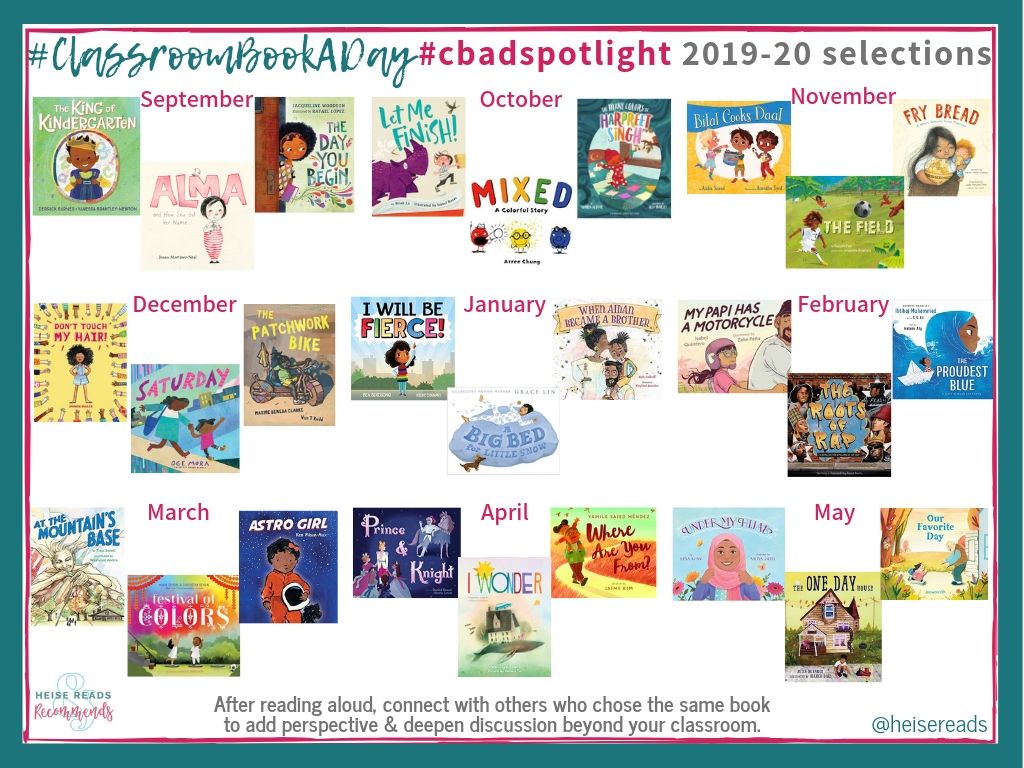
Visit classroombookaday.com for more information on #classroombookaday,
a goal to read aloud a picture book every day of the school year, at any grade,
inspired by Donalyn Miller’s #bookaday.
a goal to read aloud a picture book every day of the school year, at any grade,
inspired by Donalyn Miller’s #bookaday.




















